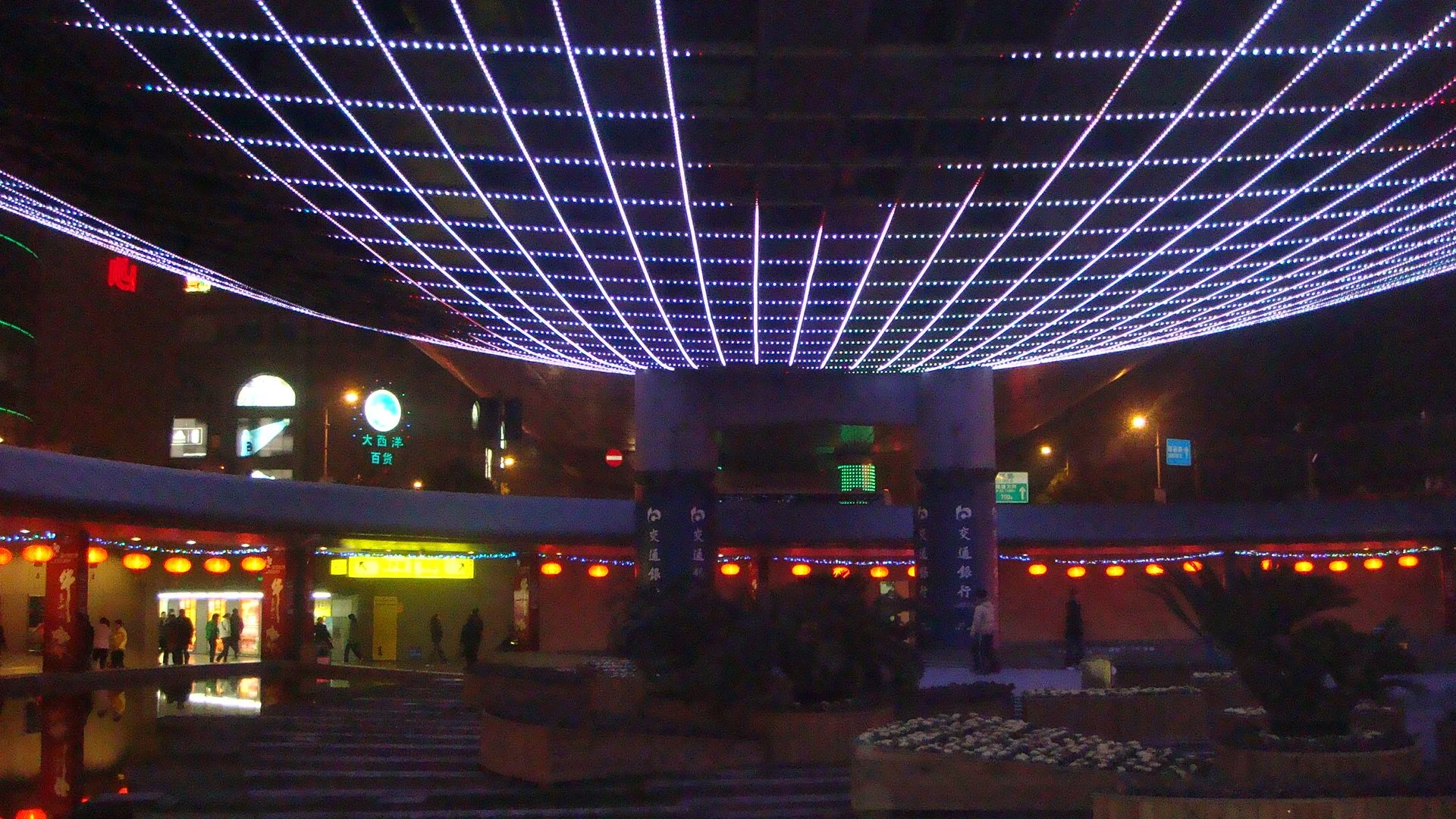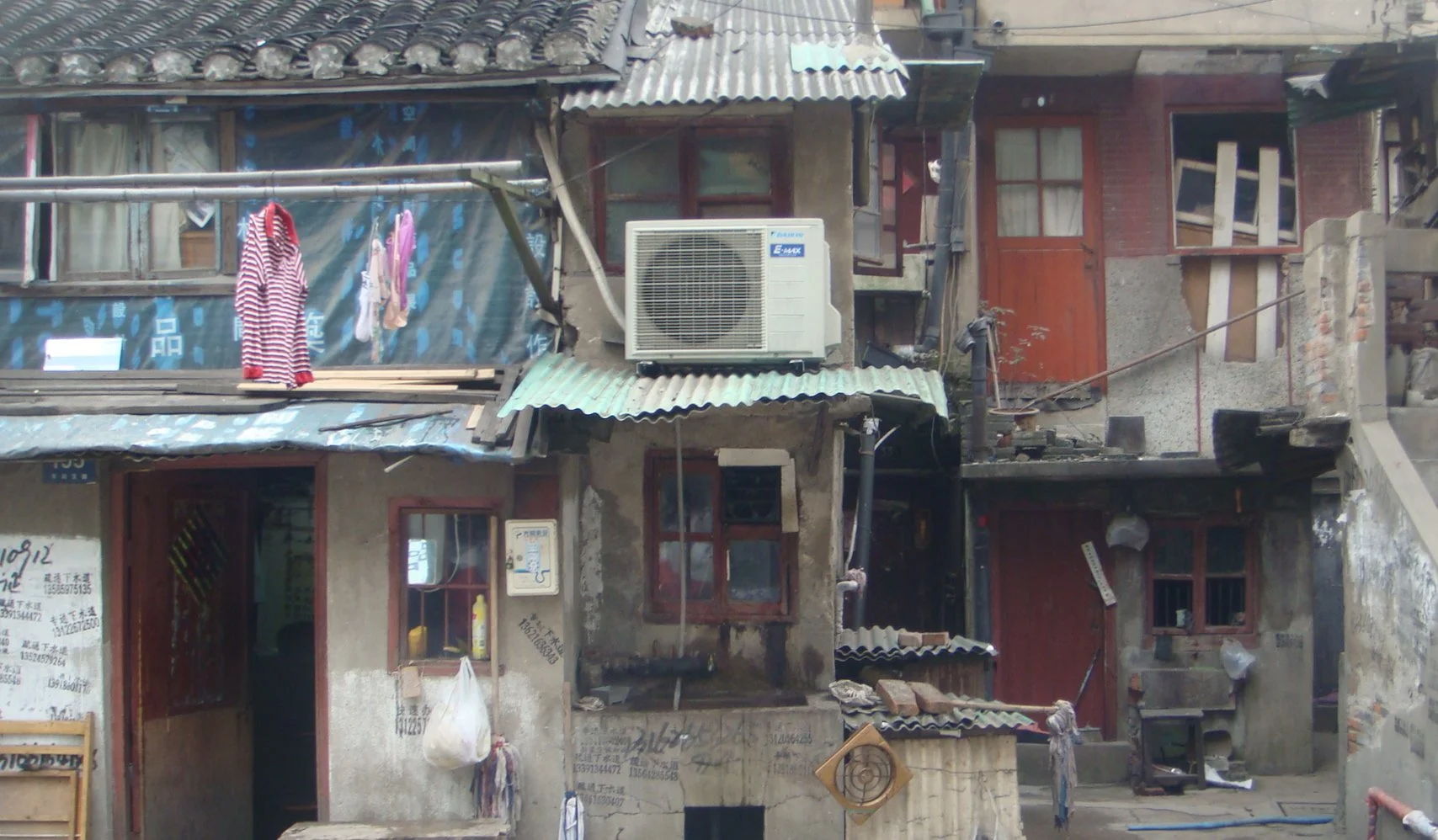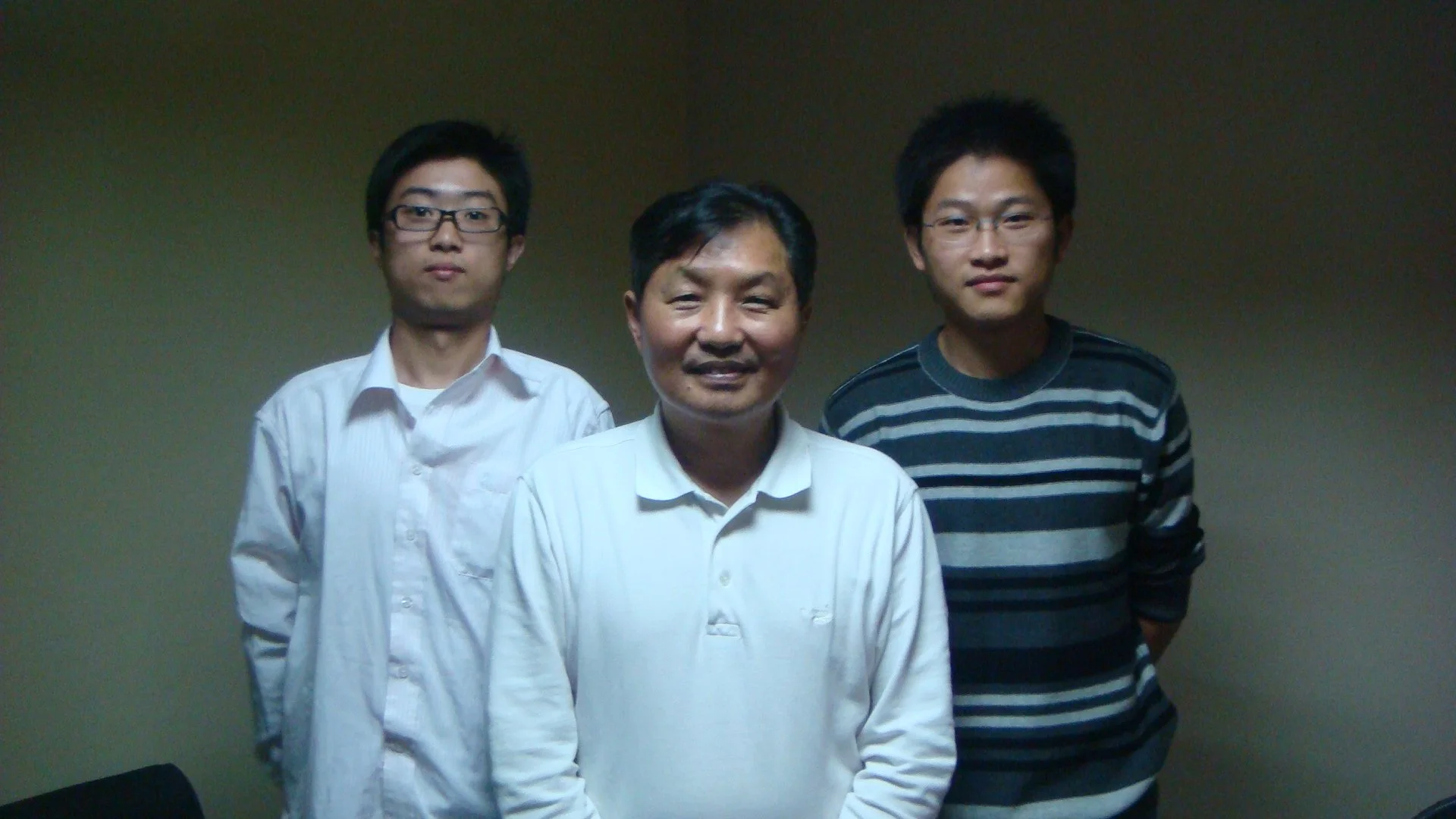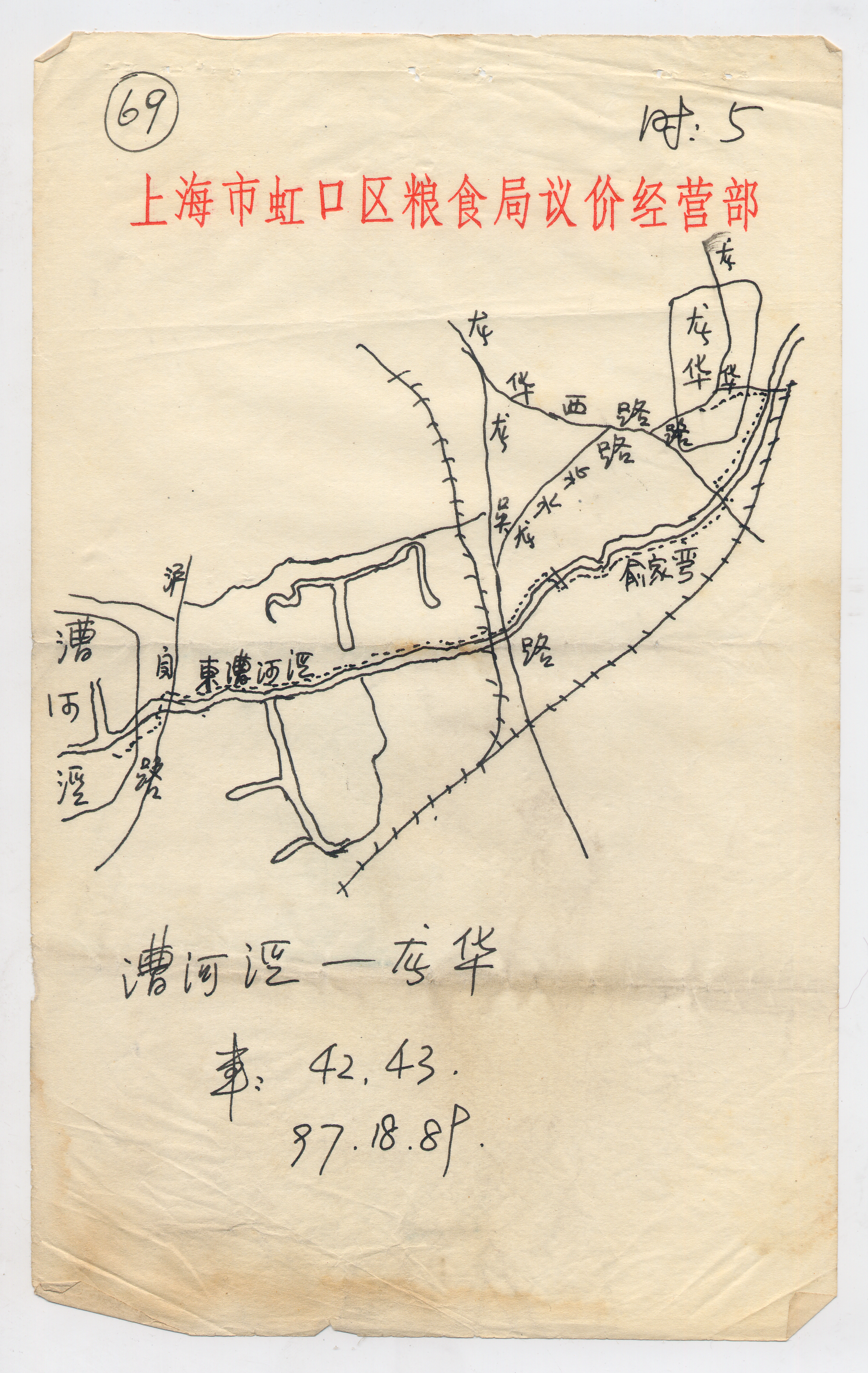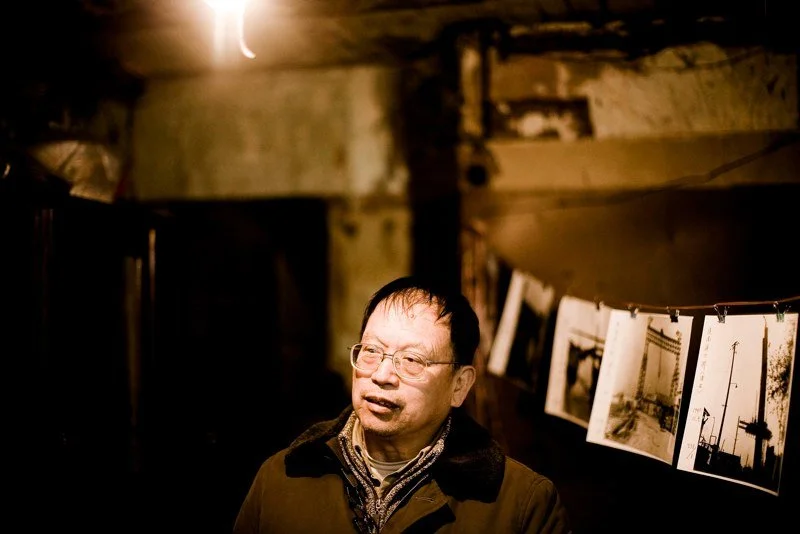SHANGHAI SPACE
Xixian Xu 2008. Photo by Ke Dingding
By Nanna Frank Møller. Denmark. 2009. 60 min
Shanghai is an explosion of transformation. Every second day a new building is built, and every year the city´s population grows by half a million people. Authorities are desperately seeking for more space, while the city´s inhabitants must adapt to constantly changing surroundings.
On the 20th floor of a skyscraper located somewhere in the city, government advisor professor Yu Shu prepares the next generation of young urban planners for Shanghai´s future. In order to find the space needed for Shanghai´s millions of citizens. But can people grow accustomed to a life below street level? professor Shu is convinced that nature will come to man´s aid. He dreams of creating a number of underground parks that can help nourish people in their busy everyday lives.
Above ground, amateur photographer Xixian Xu has sought to capture the city for thirty years, but he is no longer able to keep up with the pace. As familiar surroundings disappear and transform before his eyes, he has begun phographing all of Shanghai´s 1367 sacred gingko trees - the only remaining traces of an already forgotten past.
Shanghai Space is one of four films in the internationally-renowned series “Cities On Speed”. It premiered at CPH:DOX, November 2009. It won the first prize at Guangszhou International Film Festival 2010 for Best Film in the Wildlife and Environment Catagory.
CREDITS
Written and directed by: Nanna Frank Møller
Producer: Helle Faber
Produced by: Bastard Film & TV 2009
Cinematographer: Nanna Frank Møller
Editor: Åsa Mossberg
Composers: Sebastian Öberg & Povl Kristian Mortensen
Sound designer: Niels Arild
Producer´s assistant: Mathilde Hvid Lippmann
Director´s assistant and 2nd unit sound recordist: Guo Jing
2nd unit cinematographer: Ke Dingding
Post production: Carsten Dahl
Colorist: Carsten Dahl
Supported by: The Danish Film Institute by Michael Haslund-Christensen, DR Dokumania by Mette Hoffman-Meyer, Danida, NHK, Sundance Channel, The Danish Ministry of Education and Nordisk Film & TV Fond.
REFLECTIONS BEFORE LEAVING TO SHANGHAI, 2008
I keep coming back to the same starting point: the image of Shanghai's famous waterfront. The image that includes a both disturbing and captivating transformation. A manifestation of the Chinese superpower's ability to transform stagnant planned economy to dynamic market economy.
I am intrigued by the transformation and the space in which the transformation takes place. I am intrigued by man's ability to transform. History has shown us examples of special people who are able to undergo incredible transformations. In Shanghai, one can observe the transformative power of a superpower expressed through the city. I am intrigued by the complexity and dynamics that come with this mirror cabinet of interaction and ideology.
Is the Chinese transformation an expression of a capitalist conspiracy between American and Chinese economic forces, or is it the new form of governance for capitalist societies of the future? Capitalist planned economy or Mccommunism? I ask the question knowing that even experts in the field have very different opinions. Whether the answer is yes or no, it leaves me with the same recurring interest. If everything can be redone and is constantly being redone, what is it that keeps us from either breaking down or going crazy? It is the way in which man arranges himself and survives that piques my interest. It is the way in which man relates to the structures that surround him that arouses my curiosity.
Like, for example, the amateur photographer Mr Xu, who has lived right next to a motorway all his life in almost no space. He reminds me of a flower growing on a rock wall. His darkroom is two square meters with an associated built-in bed in the wall. A shelf of another two square metres, which you can slide onto if you have enough peace of mind not to be overcome by a claustrophobic attack.
The challenge of this film, will be to portray the complexity expressed through a character-driven narrative. To get all the nuances involved in the simple process. Human lives are so complex. The challenge will be to create space for the shared history of several characters, seen from different angles, and to create a space where the different angles are expressed, without losing the experience of coherence. The challenge of creating a multi-plot story is to maintain the depth of each character.
Nanna Frank Møller, 2008.


